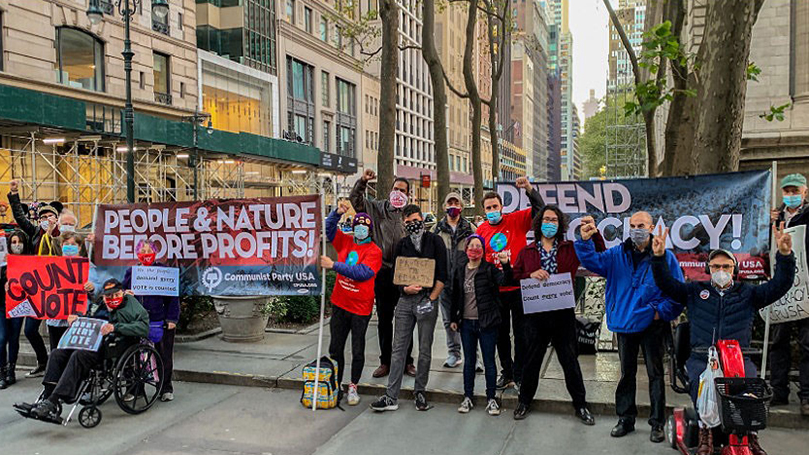
This political and organizational report was presented at the meeting of the New York State Committee on Jan. 29, 2022.
This political report is divided into four parts: 1) the meaning of the Republican Party–engineered defeat of the legislation protecting voting rights, and the need in 2022 for a mass anti-fascist front; 2) the importance of the labor upsurge we are participating in; 3) the New York state political situation; and 4) organizational proposals.
Given the serious developments around U.S. intervention in Ukraine, we have added a report from Henry Lowendorf of the Peace and Solidarity Commission and the US Peace Council.
The first thing I want to say is that I hope this meeting condemns the growing Washington-Pentagon war drive and war moves against Russia, endorsed by both Democratic and Republican parties.
It is important to emphasize that Biden’s domestic policies, while not consistently pro–working class, are different from Trump’s and give us more space to organize. At the same time, Biden’s foreign and domestic policies are in the final analysis the U.S. ruling class’s attempt to shore up U.S. hegemony and capitalist rule, both worldwide and at home.
Both imperialist war, threatened by Democrat Biden, and the danger of a fascistic coup spearheaded by the Republican Party, are products of capitalism, and as socialists we oppose both.
U.S. Hands Off Ukraine! NATO out of Eastern Europe! Let us help build in 2022 the mass fightback necessary against the right danger in 2022. And part of that successful fight surely involves fighting for people’s needs, as well as defending democracy, and for socialism.
The right-wing danger
My starting point is where we left off at our last State Committee meeting in September.
The Republican obstruction and defeat of the voting rights legislation by the Trumpite Republicans, combined with corporate Democrats, has brought us to a dangerous new place in the struggle against the right.
As media and the DOJ Task Force have focused on the violence of the coup plotters on January 6, a slow-moving and better-prepared peaceful coup is taking place with the passage of laws subverting voting rights in many battleground states.
The defeat of the John R. Lewis Voting Act, coupled with the defeat of the Build Back Better Act, has been spearheaded by many of the same Republican senators who helped plan and support the coup on January 6.
Make no mistake: election of a Republican majority in the House and Senate, victory by coup supporters in 2022 and 2024, will not mean just reactionary policies, as devastating as those will be.
Election of a Republican legislative majority will complete a long-planned fascistic power grab by the Trumpite Republican Party in 2022—enabling future administrations to curtail or smash the very vehicles we use to fight — unions, use of science, relatively independent journalism, women’s reproductive rights and voting rights, the judiciary, LGBTQ rights, public education, health care, and separation of church and state.
What is needed between now and 2022 and 2024 is a massive fightback, call it if you will an anti-fascist mass front, loosely organized, extending to all the forces that this power grab has in its cross hairs.
The only way to win this class battle disguised as an election is to mobilize the biggest turnout of labor, oppressed nationalities, youth, and women’s organizations in a mass anti-fascist front to defend democracy. The other thing is, and make no mistake about this: As we defend democracy, in order to assure the massive turnout, we must also keep our eyes on, in the words of Joe Sims, “the prize of answering to people’s needs.”
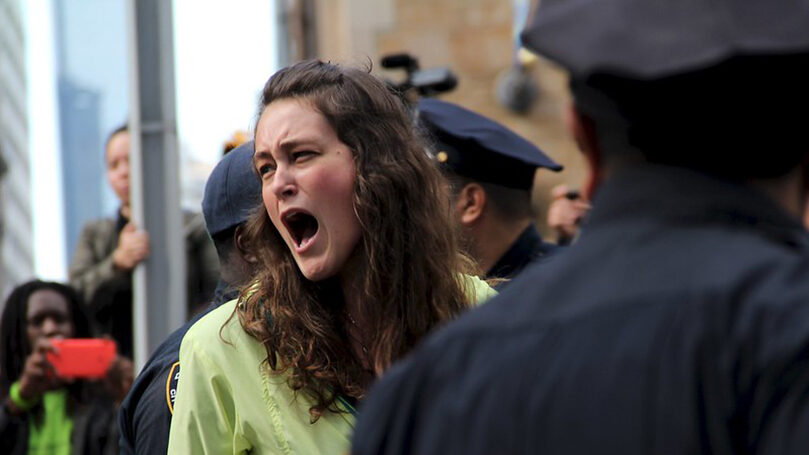
When I say mass anti-fascist front, we need to use all the means at our disposal — electoral, of course, but not just electoral, with an emphasis on mass action. Door-to-door canvassing for elections. voter registration, mass demonstrations, strikes, boycotts, sit-ins, civil disobedience. (Did you know that dozens of major corporations, headquartered right in NY, continue to fund the insurrectionist groups and Republican senators who backed the coup, even after January 6?)
The Democratic Party remains the most organized vehicle for defeating the Trump forces. In its ranks are also the racially oppressed, labor, along with the women, LGBTQ, and youth. In addition, important fighters like Stacey Abrams continue to emerge from its ranks in the course of the fight.
But a big lesson is that the leadership cannot be left to the Democratic Party. As mentioned at our YCL Party school, also important are the independent movements that have emerged alongside it. In fact, the November 3 victory would have been impossible without these independent initiatives.(Seed the Vote, Organizing Upgrade, Working Families Party, Fair Vote, New Virginia Majority you name them too. What are some in NYC?)
On one side is the Trumpist Republican Party, increasingly desperate about losing their chokehold, backed by the fascists, willing to resort to all means necessary to retain their power. While corporations are increasingly perturbed by the chaos and instability, many appreciate the tax cuts for the rich, the anti-labor Supreme Court he has appointed, and relaxation of regulations, including those on health and safety at workplaces.
On the other side are the working class and people’s majority, who have won every election this century by the popular vote. This majority is for the passage of the original Build Back Better legislation (childcare, student debt relief, health care, paid parental leave, addressing climate change, Medicare for all), and hopefully it is only temporarily discouraged by its defeat after months of assurances by the Democratic Party leadership that it would be passed through backroom negotiations.
Now, when we say this is a defense of democracy, let us be clear what we mean by democracy. Not the “democracy” exported by Wall Street and the Pentagon to countries around the world, leading to the overthrow of people’s governments that challenge Wall Street and their replacement with military dictatorship and crushing debt servitude, boomeranging back to the growth of the extreme right here.
That is not the democracy we are talking about.
We are talking about the constitutional and deeply democratic rights working people and the oppressed have struggled for and won in the U.S. over the last several centuries, against the organized resistance of the slaveowners, oligarchs, and many of the present-day corporations that celebrate this same “democracy” today.
That is the democracy we are talking about.
For the mass fightback
Biden’s speech on MLK day was good. But to be honest, at least some activists right now are discouraged, wondering if their hard work during the 2020 election campaign amounted to anything, given the Democratic Party unity with Manchin and Sinema at the expense of carrying out their election promises.
Along with voting rights, the BBB has been unsuccessfully pushed in negotiations over the last six months, despite assurances by Democratic Party leaders that it will be passed.
Rather than using the force of his office to bring Manchin and Sinema into line (ending committee chairmanships, refusing campaign funding), Democratic Party leaders have relied for months on bipartisanship.
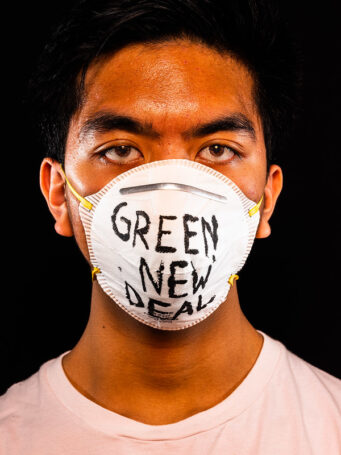 Why not a barnstorming campaign around the country, including the red states, popularly explaining what is actually in the Build Back Better? How it provides a helping hand to not only African Americans, but also the vast majority of white working people? Why not a couple hundred billboards in West Virginia promoting insulin for $30 based on the passage of BBB, for instance, rather than the astronomical costs to West Virginia voters that Manchin is enforcing?
Why not a barnstorming campaign around the country, including the red states, popularly explaining what is actually in the Build Back Better? How it provides a helping hand to not only African Americans, but also the vast majority of white working people? Why not a couple hundred billboards in West Virginia promoting insulin for $30 based on the passage of BBB, for instance, rather than the astronomical costs to West Virginia voters that Manchin is enforcing?
By the way, the squad incurred the wrath of the Democratic Party for their refusal to agree to separate the two infrastructure bills — the first so-called “hard infrastructure” bill marred by all too many tax giveaways to corporations and fossil fuel companies, and an opportunity for do-nothing Republicans to claim they are addressing people needs — and the second a far more progressive answering of people’s needs through affordable childcare, living wages, and important planks of a real Green New Deal.
The squad argued that, by agreeing to sever the two bills in the spirit of “bipartisanship,” the Dems lost their leverage to pass the BBB. It would seem the squad had a better understanding of the hardball struggle for power necessary to fight the Republicans (and corporate Democrats) than the Democratic Party leadership.
Labor
And if we had to choose one independent force to work with in the coming months, at the top of the list should be trade unions. They’re sure to be fielding candidates, setting up phone banks, raising money, and going door-to-door in Staten Island, upstate New York, and Long Island to bring out the vote. We should join with them, as we have in the past.
The NY District will be hosting a labor organizing school in late March or early April, organized by the national Labor Commission, open to all interested in labor organizing, whether at Amazon facilities or other workplaces (Starbucks, Chipotle, you name it).
We have been working with the ALU in Staten Island, an organizing committee working independently from other unionizing efforts nationally at Amazon by the resurgent Teamsters and RWDSU. The Labor Commission is also working with our comrades to help organize other fulfillment centers around the country.
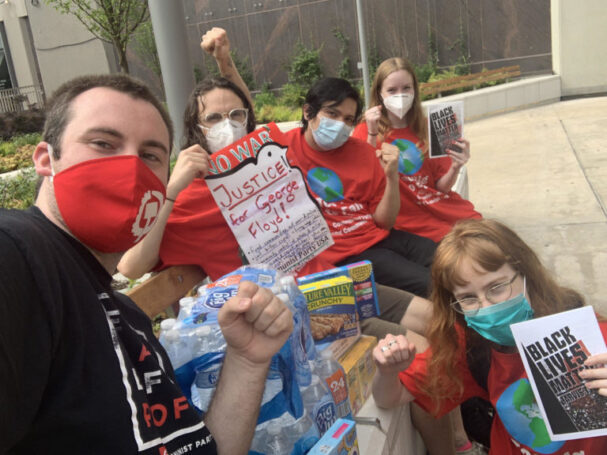 But there have also been other strikes and unionizing drives, not to mention the strike of Columbia University where the YCL participated recently.
But there have also been other strikes and unionizing drives, not to mention the strike of Columbia University where the YCL participated recently.
Essential workers, once hailed as heroes during the beginning of the pandemic, are now urged to return to work in unsafe conditions for the sake of production for profit. Workers are voting down contracts because pay raises are more like pay cuts, since they don’t keep up with rising inflation. This fight is often as much against two-tier contracts, as well as for health and safety, as it is for pay increases. The common fight is increasingly against an old neoliberal industrial policy that has not been successfully challenged by labor for decades.
At the Amazon rally on MLK day during the shift change at JFK 8 in Staten Island, organizers spoke about the legacy of MLK, his work organizing Memphis sanitation workers, and how he would be with us today. In fact, the Poor People’s Campaign, which has called for a mass action on June 18 in Washington, DC, is based on MLK’s work and applies his legacy to today’s conditions.
We have done a good job showing up with our banners and flags to show our support, but we must do even better at strike support. Isn’t the labor movement organizing a new civil rights movement of our time, and shouldn’t our labor solidarity include showing that all these strikes and organizing efforts are connected?
Can we help these streams come together into a larger movement, building on each other, helping to renovate the central labor councils and labor feds, bring together the strike waves, and organize for the cause of labor political action (the Pro Act)?
It also works the other way. The anti-fascist front and anti-fascist candidates must build solidarity with the strikes and organizing drives, which can be a powerful force for fixing a broken democracy.
Let’s hear from CJ Fernández [Chair, Albany Club] about the attempt to privatize the post office and from the teachers about the attempts to privatize Medicare.
New York
Our “100 Days for a Better World” [resolution of the CPUSA National Committee] says that as we fight the extreme right, we also need to fight for people’s needs. The fight for people’s needs is especially important in New York, home of Wall Street, where the COVID pandemic, combined with the results of years of neoliberal and capitalist policies, has created a devastation not seen since the Depression.
Did you know that, in the midst of this, Amazon head Jeff Bezos makes $15,000 a minute? In two minutes he makes as much as most Amazon workers make in a year.
The pandemic has woven itself into everything, including the right to call in sick at Amazon, the fight for adequate nurse staffing at Buffalo hospitals, labor shortages and supply chain delays, and division between parents and teachers’ unions around the question of keeping schools open during the pandemic.
At the same time, the pandemic has exposed the bankruptcy of neoliberal policies, the hollowed-out heart of public health care, and production for profit. Money that was said not to exist is found to exist at a time of mass pandemic. Through government action, war ships have been turned into hospitals, and millions are seeing that the system has failed them in this time of crisis. There is a better way.
Housing
At the expiration of the NYS debt moratorium on January 15, thousands of NY renters faced evictions for non-payment of accumulated rent. More money for legal representation offered by Governor Hochul for tenants in danger of being evicted is helpful, but it is not the solution. With housing, as with labor, the emphasis is on returning to the “normal” of housing for landlord profit, as well as production.
Meanwhile the NYC Housing Authority continues to deteriorate without a federal plan for adequate funding. (Hochul’s budget address included no money for public housing.) One hundred thousand units of housing over five years are proposed, much apparently through continued reliance on real estate developers.
One answer to the crisis continues to be the fight for the “Good Cause Evictions” bill, as well as ending once and for all the 421-A tax write-offs for real estate developers. Also, not just demands for much-needed repair of existing public housing units, but massive funding for expansion of new quality public housing.
As thousands of New Yorkers face eviction, how can we better participate in the key upcoming struggles around “Good Cause Eviction” and against 421-A?
How can we make connections and build unity between tenants of private and public housing? How can we bring in labor? What would a Party candidate campaign bring to the fight? What is the Communist plus contribution to the “housing is a right” movement?
Housing affects so many of our members, upstate and downstate, not to mention the working class as a whole. It has so many connections to other struggles. The statewide housing committee will be working on this and helping us to find a way forward.
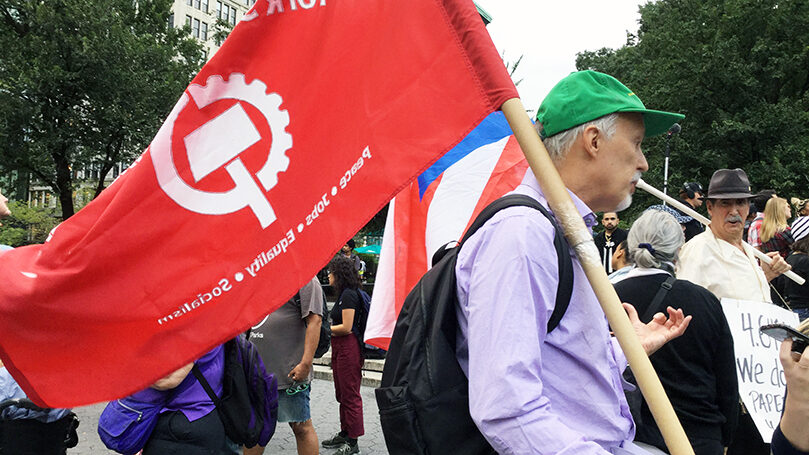
The battle of ideas
Part of being socialist is relentlessly engaging in the battle of ideas, whether against the extreme right or the extreme center of the Democratic Party. This battle of ideas can be waged in district and club forums, distribution of PW and cpusa.org articles, and through our tabling and coalition work.
This battle can involve clubs’ countering the lies of the extreme right about critical race theory and vaccine mandates, as well as the weaponization by Republicans of the necessary withdrawal of troops from Afghanistan, the role of war spending, or the advances of Build Back Better legislation.
As for countering the falsifications of the extreme center: a class analysis of the causes of inflation, the fallacy of “the return to normal” of neoliberal economics, and why we are not going back; exposing and opposing the new cold war against Russia and China. Also “Defunding the Police” versus refunding the police and criminal justice reform. Medicare for all, Green New Deal. I am sure people have others.
The NY State governor’s race
Governor Hochul’s State of the State address promises to make NYC both “the most business friendly and most worker friendly state in the nation.” She, like her other mainstream opponent, Tom Suozzi, are campaigning as “commonsense Democrats,” steering a course between the demands of the people’s movements and the demands of the extreme right.
In their first debate, sponsored by NYPAN recently, both went out of their way to praise as a model the mayoral campaign of Eric Adams.
Clearly, she is not Cuomo. She announced support for a revamped ethics commission, supports term limits, and promises a more collaborative relationship with legislators.
True, Hochul has promised money for increased childcare for New Yorkers and health-care workers. But as the (DSA) socialist caucus of state legislators responded, “Governor Hochul promised a bold agenda, but offered limited proposals that do not address the crisis facing working New Yorkers. Instead of tax breaks for corporate interests and small changes, to existing programs.”
Not only do Hochul and Suozzi oppose the NY Health Act, and a further eviction moratorium, but also taxing the rich and the stock transfer tax, fundamental actions if the state is to fund progressive programs and address NYS’s galloping inequality.
Furthermore, both Hochul and Suozzi repeat GOP talking points about how taxing the rich will lead the rich to flee New York State. Also, security for them means a refunding of the police, and placing confidence in the same old criminal justice complex, even if nibbling around the edges of criminal justice reform.
Amid the continuing crisis of affordable housing, Hochul promises a modest goal of building 100,000 new units over five years. She refuses to support Good Cause eviction legislation, or the needed end to the infamous 421-A tax giveaways to developers.
We know electoral action is important. The successful fight to defeat the corporate Democrats of the Independent Democratic Caucus during the 2018 primary opened up a new terrain of struggle, leading to passage of major legislation protecting tenants. Members of the NY District were very involved in the campaign, side by side with the Working Families Party and New York Progressive Action Network.
But we also know that Democrats, as well as Republicans, can proclaim what they are against, but table bills when it is time to state what they stand for, and a Democratic Party majority is no guarantee that progressive legislation is implemented. The passage of the NY Health Act, while supported by a majority of the legislature, is an example.
“We can’t return to normal,” said Jumaane Williams, a gubernatorial candidate. “Normal didn’t work for most of the folks who are suffering the most during the pandemic. Frankly, it didn’t work for most of us in this state and this city.” Jumaane, the candidate likely to be backed by the WFP, is for the GND, NY Health Act, and other progressive legislation, and gathered 40% of the vote in his run for lieutenant governor against Hochul in 2018.
A final question: What is holding us back from our own Party running candidates, if not for governor, then local offices?
Organizational proposals
I have asked a couple of questions. But the final and biggest one is this: As thousands look to the CPUSA to play the role we did in the 1930s and ’40s, we do not yet have the capacity that is needed, In rebuilding, what are the concrete steps we should take, based on this meeting, so we may increase our capacity to play the role that is needed?
As discussed at the last SC, the challenge is not gaining new members; 1,700 have come since September, and more to follow. The challenge is to build our core, based on our program. Identifying future leaders. Building the clubs as the building blocks of the party.
Here are some proposals.
1. Greater YCL-Party Club coordination and collaboration. In the past we have underscored the importance of the YCL initiatives and activities. They are the future leaders of the Party, and we must do everything we can to support them.
An important development in the NY District has been the increasing solidarity shown by members of the YCL with clubs. The participation of YCL members in the last year has been a great contribution, bringing new initiatives, for instance, to the Queens, BXI Uptown, and Brooklyn Clubs.
We want to take this collaboration and coordination further. In addition to asking you to vote on the addition of two new members to the exec toward the end of this meeting, we are asking you to vote to make the two YCL coordinators (whoever they may be) permanent members of the exec.
You should know we are also asking the YCL to strongly encourage, though not require, new members to participate in monthly club meetings, in areas where they exist, in addition to their YCL activities. This can help YCL and the clubs.
2. Labor. All our labor activists out for “labor organizing” school in March or April organized by the Labor Commission and hosted by the NY District. For our concentration on Amazon organizing, and labor solidarity with strikes and labor organizing in New York State in the new year.
3. Build the statewide housing committee. Develop a coordinated presence in the housing movement, both with an orientation to existing struggles and a longer-term analysis for the movement. A starting point is working in a coordinated way within the existing coalitions where tenants and workers are.
4. Sharpening our tools. Greater use of tools: banners, flags, pamphlets, and the use of print PW, a task still to be accomplished. Coalition work and tabling, based on our concentration. Forums and articles, based on the battle of ideas. Social media and computer training for those who need it, still to be implemented.
5. Greater opportunities for involvement of State Committee members in District work between meetings. Participation as a State Committee member should not be limited to attending State Committee meetings. There are growing opportunities to participate in District work between meetings, including joining a subcommittee regarding a specific task. Recent ones include the New Members Committee, the committee to build the African American History and Women’s History Month celebrations, and the subcommittee to help plan the next State Committee.
6. Continued building of the clubs, the building blocks of the Party. Continued building of the clubs, with help from Club Guidelines, towards making the club an organizing center and a place of political growth of comrades. In addition to extended reports from labor, housing, and youth, we hope to hear reports from the clubs in the discussion today. How is it going in your club?
Images: top, NYS CPUSA, Protester arrested, UFCW International Union (CC BY-NC 2.0); Green New Deal, 350.org (CC BY-NC-SA); YCLers, NY CPUSA; CPUSA flag, NY CPUSA.


 Join Now
Join Now